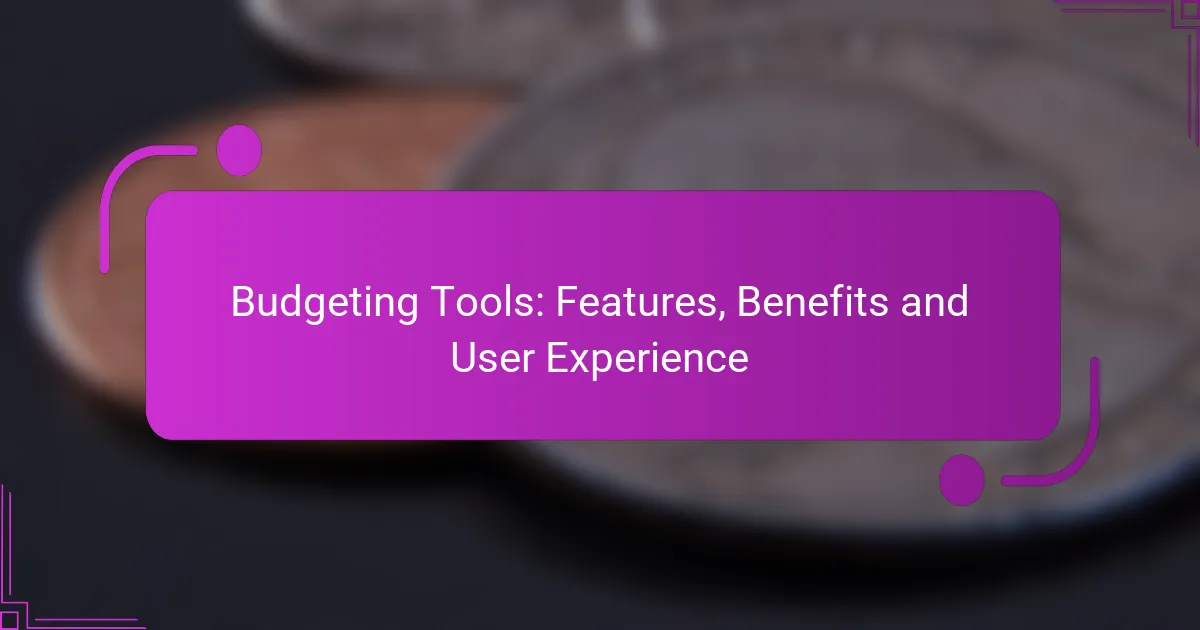Micro-investment tools have revolutionized the way individuals can engage with investing by allowing users to invest small amounts of money effortlessly. These platforms often round up everyday purchases to the nearest dollar, making it easy for beginners to start building their investment portfolios. However, with varying features, fees, and user experiences, it’s essential to compare different options to find the right fit for your financial goals.

What are the best micro-investment tools available?
The best micro-investment tools allow users to invest small amounts of money easily and conveniently. These platforms typically round up purchases to the nearest dollar and invest the spare change, making investing accessible for beginners and those with limited funds.
Acorns
Acorns is a popular micro-investment app that automatically invests your spare change from everyday purchases. By linking your debit or credit card, Acorns rounds up transactions to the nearest dollar and invests the difference into a diversified portfolio.
Acorns offers various investment options based on your risk tolerance, and it charges a monthly fee that varies depending on the plan you choose. This makes it a straightforward choice for those looking to start investing without needing significant upfront capital.
Stash
Stash combines micro-investing with personal finance education, allowing users to invest as little as $5 in fractional shares of stocks and ETFs. This platform emphasizes learning, offering resources to help users understand their investments better.
Stash charges a monthly subscription fee, which includes access to personalized investment advice and banking services. This makes it suitable for users who want to grow their investment knowledge while building a portfolio.
Robinhood
Robinhood is well-known for commission-free trading and offers a user-friendly platform for micro-investors. Users can buy fractional shares of stocks and ETFs without paying trading fees, making it appealing for those looking to invest small amounts.
While Robinhood does not have a traditional micro-investing feature like round-ups, its fractional share capability allows users to invest with minimal amounts. However, potential investors should be aware of the risks associated with trading and market volatility.
Betterment
Betterment is a robo-advisor that automates investing for users based on their financial goals. It requires a minimum investment, but it offers a user-friendly experience and a diversified portfolio tailored to individual risk preferences.
Betterment charges an annual management fee, which is relatively low compared to traditional financial advisors. This platform is ideal for users who prefer a hands-off approach to investing while still wanting to grow their wealth over time.
Wealthfront
Wealthfront is another robo-advisor that provides automated investment management with a focus on long-term growth. Users can start investing with a low minimum and benefit from features like tax-loss harvesting and financial planning tools.
Wealthfront charges a low annual fee, making it an attractive option for those looking to invest small amounts while taking advantage of advanced investment strategies. It’s suitable for users who want to maximize their returns with minimal effort.

How do micro-investment tools compare in features?
Micro-investment tools vary significantly in features, catering to different investor needs and preferences. Key areas of comparison include investment options, fees, user experience, and account minimums, which can greatly influence your choice of platform.
Investment options
Micro-investment platforms typically offer a range of investment options, including stocks, ETFs, and even cryptocurrencies. Some tools focus on specific sectors or themes, while others provide a diversified portfolio automatically. For instance, platforms like Acorns invest in ETFs, while others like Stash allow users to choose individual stocks.
When selecting a micro-investment tool, consider the types of assets you want to invest in and whether the platform aligns with your investment goals. A broader range of options may provide more flexibility but could also increase complexity.
Fees and costs
Fees can vary widely among micro-investment tools, often ranging from no commissions to monthly subscription fees. Some platforms charge a percentage of assets under management, typically between 0.25% and 1%. It’s essential to review the fee structure carefully, as high fees can erode your investment returns over time.
Look for platforms that offer transparent pricing and minimal hidden costs. Some may have free tiers for basic services, which can be beneficial for new investors. Always calculate how fees will impact your overall investment strategy.
User experience
User experience is crucial when choosing a micro-investment tool, as it affects how easily you can navigate the platform and manage your investments. Many tools prioritize intuitive design and mobile accessibility, allowing users to invest on-the-go.
Read user reviews and explore demo versions to gauge the interface and functionality. A seamless experience can enhance your engagement and help you stay on track with your investment goals.
Account minimums
Micro-investment tools often have low or no account minimums, making them accessible to a wider audience. Some platforms allow you to start investing with just a few dollars, while others may require a minimum deposit ranging from $5 to $100.
Consider your financial situation and how much you are willing to invest initially. Low minimums can be advantageous for beginners, enabling them to start building a portfolio without significant upfront capital.

What are the user insights on micro-investment tools?
User insights on micro-investment tools reveal a mix of satisfaction and challenges. Many users appreciate the accessibility and ease of starting to invest with small amounts, while others express concerns about fees and limited investment options.
User satisfaction ratings
User satisfaction ratings for micro-investment tools generally hover around the moderate to high range, with many users reporting positive experiences. A significant portion of users values the user-friendly interfaces and educational resources provided by these platforms. Ratings often reflect the ease of use and the ability to start investing with minimal capital.
On popular review sites, many micro-investment apps receive scores between 4 and 4.5 out of 5, indicating a strong level of approval among users. The ability to automate investments and the availability of diverse investment options contribute to these high ratings.
Common user complaints
Another common issue is the lack of personalized advice or guidance, which some users desire as they navigate their investment journeys. These complaints highlight the need for micro-investment platforms to balance low-cost investing with adequate support and diverse offerings.
Success stories
Success stories from micro-investment users often highlight significant financial growth over time, even with small contributions. Many individuals share experiences of building substantial savings by consistently investing small amounts, demonstrating the power of compound growth. For instance, users who invested regularly over several years report seeing their portfolios grow into thousands of dollars.
Additionally, some users credit micro-investment tools with helping them develop better financial habits. By making investing accessible, these platforms encourage users to prioritize saving and investing, leading to improved financial literacy and confidence in managing their finances.

What criteria should you consider when choosing a micro-investment tool?
When selecting a micro-investment tool, consider your investment goals, risk tolerance, and budget, including fees. These factors will help you identify a platform that aligns with your financial objectives and personal circumstances.
Investment goals
Your investment goals significantly influence the choice of a micro-investment tool. Whether you aim to save for retirement, build an emergency fund, or accumulate funds for a specific purchase, the platform should support your objectives. For instance, some tools focus on long-term growth, while others may prioritize short-term savings.
Define your time horizon and expected returns to narrow down your options. If you’re looking for aggressive growth, choose tools that offer a diverse range of investment options, including stocks and ETFs. For conservative goals, consider platforms that emphasize savings accounts or bonds.
Risk tolerance
Understanding your risk tolerance is crucial when choosing a micro-investment tool. This refers to how much risk you are willing to take with your investments, which can vary from low to high. Tools that offer a conservative approach may invest primarily in low-risk assets, while others might focus on higher-risk, higher-reward opportunities.
Assess your comfort level with market fluctuations. If you prefer stability, select platforms that provide safer investment options or automatic rebalancing features. On the other hand, if you are open to risk, look for tools that allow for more aggressive investment strategies.
Budget and fees
Your budget and the associated fees of a micro-investment tool are essential considerations. Many platforms allow you to start investing with small amounts, often as low as $5 or $10. However, be aware of any fees that may apply, such as management fees, transaction fees, or account maintenance charges.
Compare the fee structures of different tools to ensure they align with your investment budget. Some platforms may offer free trades but charge higher management fees, while others might have a flat fee regardless of trading activity. Aim for a balance that minimizes costs while maximizing your investment potential.

How do micro-investment tools work in major US cities?
Micro-investment tools allow users to invest small amounts of money, often rounding up purchases to the nearest dollar and investing the difference. These platforms cater to urban populations by providing accessible investment options that require little initial capital, making it easier for individuals in major US cities to start building wealth.
Key Features of Micro-Investment Tools
Micro-investment tools typically offer features such as automatic round-ups, diversified portfolios, and user-friendly interfaces. Many platforms allow users to set investment goals and track their progress through mobile apps. Some also provide educational resources to help users understand investing basics.
For instance, a user might link their debit or credit card to a micro-investment app, which then rounds up each purchase to the nearest dollar and invests the spare change. This feature encourages consistent investing without requiring significant upfront capital.
Popular Micro-Investment Platforms
Several platforms dominate the micro-investment landscape in the US, including Acorns, Stash, and Robinhood. Acorns is known for its round-up feature, while Stash allows users to choose specific stocks and ETFs to invest in. Robinhood offers commission-free trading, appealing to those looking for more control over their investments.
Each platform has its unique strengths, so users should consider their investment style and goals when choosing one. For example, Acorns may be ideal for passive investors, while Robinhood suits those who prefer active trading.
User Insights and Experiences
User experiences with micro-investment tools vary widely. Many appreciate the ease of starting to invest with minimal amounts, while others express concerns about fees and the impact on returns. It’s essential for users to read the fine print and understand any associated costs before committing to a platform.
Common feedback includes the satisfaction of seeing their investments grow over time, even if the amounts are small. However, users should remain aware of market risks and the potential for losses, as micro-investing does not guarantee profits.


